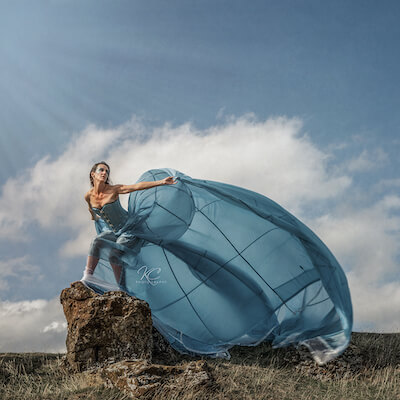Without clear boundaries, empowerment and the open sharing of thoughts, individuals will not feel safe to improvise and moments will not be seized.

(c) Kathryn Chapman Photography
I deeply appreciate the amazing people I meet and get to learn from (and, I hope, sometimes contribute value to). As I often say, “people are my library”, so my writings are a curation and a sharing of what I have learned and continue to learn.
As a wonderful example, this week’s guest on WhatComesNextLive was Kathryn Chapman, photographer and innovator, creator of the amazing “Face to Face” process, a brave and transformative process for the photography subject. For more on this, watch the “face to face conversation” between Kathryn and Kay Scorah, herself also a past guest of mine.
In listening to Kathryn explain how she creates a space for her photography subjects to truly express themselves, she used a phrase which truly resonated with me:
Create Boundaries, then Improvise
This made my head spin with the elegant simplicity along with power of this statement.
in order to improvise in any space, we need to feel safe and supported, as well as empowered, skilled and equipped to do so.
This speaks so strongly to me about leadership and business in so many ways, a few of which I riffed on during the half hour conversation with Kathryn.
Let me riff on an example highlighted by a recent conversation.
A linked thought for business leaders among my readership is around Mission Command, the philosophy the British Army devised in order to empower soldiers to make decisions and act without always having to seek permission first within an organisation that has around twenty hierarchical layers. Recently I listened to a retired senior officer who distilled it to simplicity for me. I will write more on this after my next call with him, where I hope to glean more wisdom, but for now:
- Mission Command is about empowering to “seize the moment”
- It is not about complete freedom to act, but it does mean each rank must know what the two ranks above are thinking, to “be in their mind”
- Once they know that, then when a situational opportunity arises, they are empowered to make “on the spot” decision, including taking command of and using the resources available to those ranked up to two levels above them.
Looking at this through Kathryn’s prism of “Create Boundaries, then Improvise”, the boundaries are set at no more than two ranks higher, the safe space within the boundary is that one is empowered to act. In that space, soldiers will feel free to improvise. Without clear boundaries, empowerment and the open sharing of thoughts and information within that space (this is absolutely key and, where absent, often leads to failures in organisations and processes), individuals will not feel safe to improvise and moments will not be seized, opportunities will be lost.
A closing thought is that the #WhatComesNextLive format feels like another example of: Create Boundaries, then Improvise. Guests know the set up is simple. Come along for a thirty minute conversation, talk about whatever comes to them around WhatComesNext. Suffice to say that, in approaching forty shows, I have often been surprised and amazed at how the conversations have organically flowed through open improvisation in that “boundary” and safe space.
